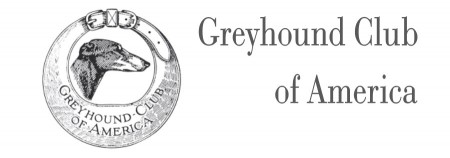If you want to look into the soul of a dog, the eyes are window that allows you to go there. If you have their eyes, you have them, as I have told many budding dog handlers over the years. The greyhound’s eye is no exception, but it is a process of trust and time to get there.
I have found that there are two looks to the Greyhound eye and you can see them in the same dog depending on the circumstance. I call one, the couch eye, with the soft expression of a doe, begging for attention, as you might expect of the dog at home lounging away the day at home. The other is the look of a hunter, alert, bright, and focused. The greyhound eye is described in the standard as dark (as in color), bright (as in alert), intelligent indicating sprit and liveliness, exactly what you would expect of a keen, sighthound hunter. This is the eye I expect to see in the ring as they observe all that is going on around them. There are some caveats to discuss here. This is not an eye you will see if the dog is uncomfortable in its’ surroundings. Then, you will see wide, darting eyes that give a most displeasing expression. Greyhound breeders tend to agree that dilute color greyhounds should have eyes as dark as their coat. This is a difference of opinion from our Whippet friends who stand pretty firmly on a dark eye for all.
Although not specifically mentioned in the standard, greyhound eyes are oval and obliquely placed in the skull. Think about the function of the Greyhound, to course a wide variety of game over a wide variety of terrain. The fit of the eye into the greyhound skull allows for an unobstructed view of game far away. There should be no heavy brow, no cheekiness, or prominent sinuses to get in the way of a clear view. The greyhound’s peripheral vision is said to be 270 degrees, an additional 20 degrees compared to breeds not in the sighthound group. This happens as the result of something called the visual streak which is a horizontally aligned area in the retina lined up with ganglion cells. Ganglion cells process visual information that begins as shades of light and dark and transmit it to the brain via long fibers. Not too long ago, there was belief that all dogs had their ganglion cells distributed in such a way, but in a study conducted by Paul McGreevy, Alison Harman and Grassi T. D, it was found that only dogs with long noses have a visual streak. The visual streak is therefore a characteristic of dogs with long muzzles that needed to heavily rely on their peripheral vision to hunt. It permits a wide field of view with excellent vision allowing these dogs to easily detect predators on the horizon. What an amazing adaptation the sighthounds have been given to do their job! As you view the greyhound in front of you, check out the look they give you, and be prepared to see the gaze of a hunter from afar but as you come closer be prepared to lose your heart.
If you would like to look at lots of greyhound eyes, visit us at our 2022 Specialties in Canby, Oregon, June 24th, Purina Farms, Grey Summit, Missouri, Sept 16th and October 14th, Legion Stadium, Wilmington N.C. October 14th. Ring side mentoring will be available as well as plenty of Greyhound breeders to speak with.
